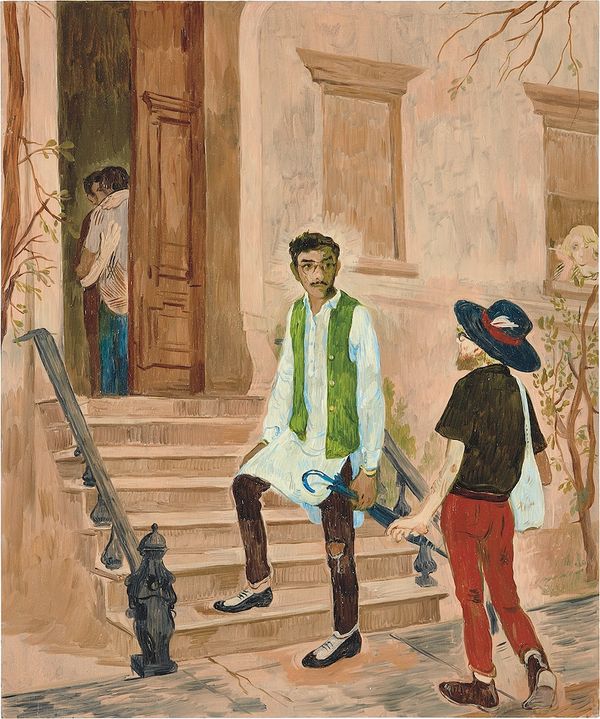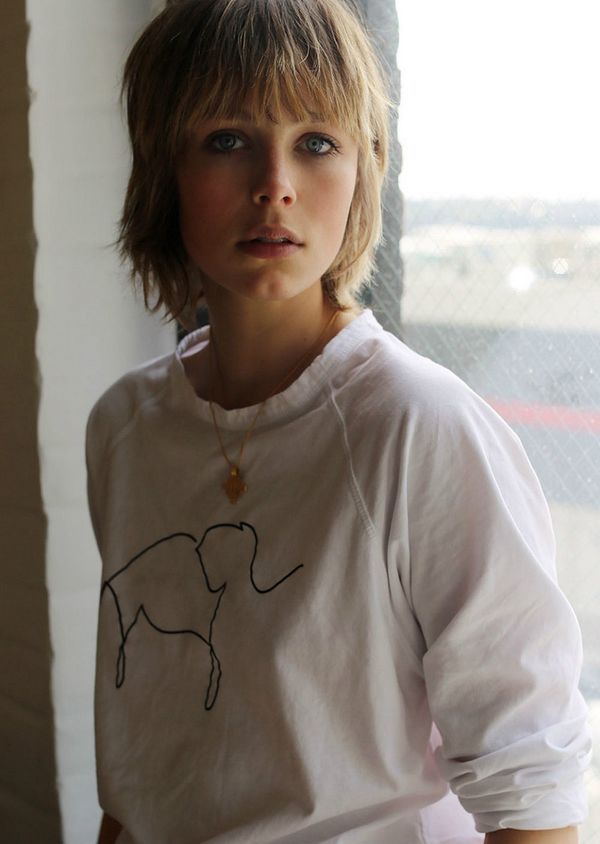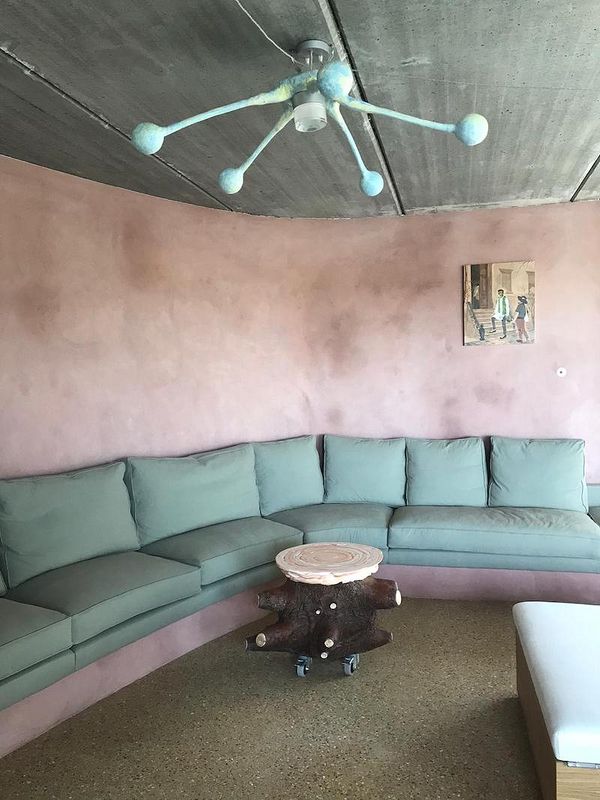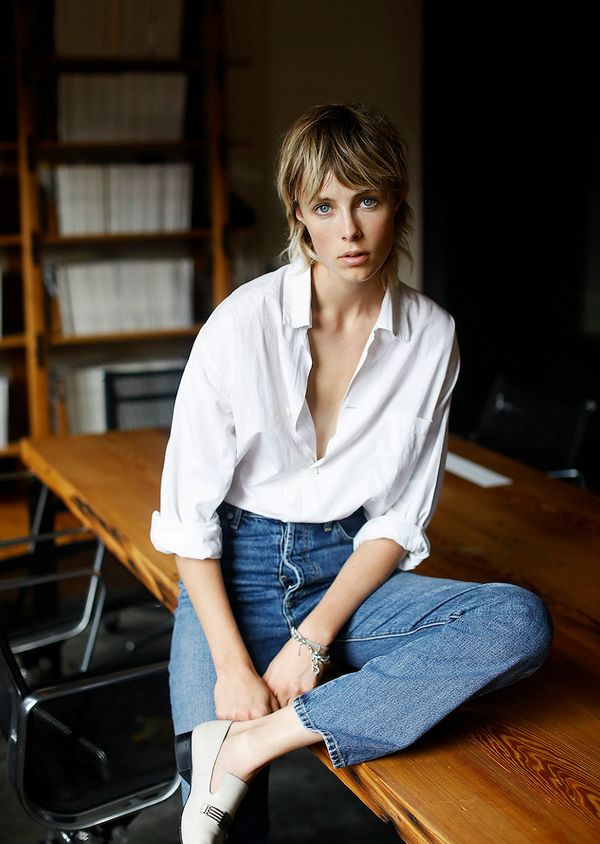Salman Toor, Fort Greene, 2018. Estimate $100,000 - 150,000. 20th Century & Contemporary Art Evening Sale New York.
Edie Campbell began modeling while she was studying art history at The Courtauld. Rather than identifying with the models and muses of the masterworks she studied, she says her art historical background influenced her own approach to composition—and how to elicit feeling. Her relationship to the art she collects very much resides in this mutual exchange, feeling moved by and loving the works she collects.
As Campbell parts ways with Fort Greene by Salman Toor, we sat down with her to learn more about her collection, influences, and her very modern initial discovery of the artist's work.
PHILLIPS: To start, I was wondering if you could tell me about your collection. When and how did you get started?
EDIE CAMPBELL: I wanted to buy things that I love to live with, rather than collecting for any kind of bigger or more ambitious reason. I just love to live with art that has been made from a process or background that I find inspiring or interesting. It’s all young artists, most of them British or Britain-based.
P: What was the very first work that you collected with intent?
EC: It was probably a painting by a young British artist called Faye Wei Wei. I had a big wall in the flat I was living in, and I wanted something for it. It’s this big painting, and it has a lot of symbolic imagery. There will be a floating hand with a ring on it and then a giant horse. Her painting is very gestural too, and I love living with that. It’s big, bold, quite romantic. That was the first thing that I bought, and I’ve had it for a couple of years.
Edie Campbell.
P: Does your collection seem to have a cohesive aesthetic narrative in addition to being mainly emerging British artists?
EC: I tend to like quite gestural work, and I have bought mostly paintings. It’s interesting because my mum has collected a lot of art over her lifetime, so I grew up in a house with a lot of more macho work; she bought the YBAs. There was a lot of quite mature Damien Hirst and then, well, Gary Hume’s works are not that macho, but she liked the slightly chunkier work, the work that demands attention and space.
A lot of the work I have bought has been quiet and, in a way, more sentimental, more narrative-based. So I would say that I lean towards work that has feeling.
P: In terms of Salman Toor, could you tell me the story behind collecting this particular work, Fort Greene?
EC: Yeah, I mean, it's a really modern story. I saw his work on Instagram, and I thought, “wow, these paintings are so beautiful.” It was around the time that he had a show at Aicon Gallery, and it popped up in my feed. I contacted the gallery and found out what was available, and I didn’t even see it before I bought it, I just loved the story. I loved all the paintings I was sent that were available, and I struggled to choose. I find his work very moving.
And it falls into the art history that I studied. The canon of turn-of-the-century artists, the Monets and Renoirs. It's a real snapshot of modern life and in a very gentle narrative way. And his paintings are just full of feeling. I actually had it next to my big Faye Wei Wei for a while, which was very sweet.
I love imagining what the two men are saying to each other on the steps. It’s such a New York painting to me, as well, that red brick Brooklyn townhouse. Then I love the woman leaning out the windows smoking a fag and eavesdropping because I feel a litle bit like that’s what I’m doing when I’m looking at the picture. So I think that there’s a real crackle of energy to it. Despite it being unassuming, it still really draws your attention.
Salman Toor's Fort Greene with table by James Shaw and light fitting by Christabel MacGreevy.
P: As a young creative person yourself who participates in the creation of narratives and imagery, do you identify with the makers or subjects of the paintings at all?
EC: It's funny, because when I first started modeling, I was at university and so I was studying why pictures work the way they do. Why certain graphic forms or shapes make you feel a certain way, and it really made me confident in my work as a model because suddenly I understood how pictures worked. So it was actually a reverse influence. I have always been fascinated in why pictures work, why a gesture or a color communicates something and if it was slightly different, it would communicate something else entirely. It’s a very visual world I live in.
P: Along those lines, I wondered if the person that you see in the finished product feels like the person you are in real life?
EC: Absolutely no. No. Totally different, whole other person. It’s a portrait of me portraying someone that I was for a moment.
P: Your relationship to that must be quite uncanny?
EC: It’s kind of magic, and I feel very fortunate to be able to do that and to be different people. To be challenged in that way and to try and communicate something in a world that can be quite transactional. It’s a commercial industry, but to communicate something very separate from commerce is a real privilege.
P: Where do you see yourself as a participant in the visual language of right now? You don’t collect trends, but certainly you are a trend-maker in certain ways.
EC: I don’t want to buy art that is trendy in a moment because I think then you’re chasing something elusive. Taste is a funny thing. It’s unexpected to me that Salman’s work is very sought-after now, that was never my intention. When I bought it, it was because it was beautiful, and I wanted to live with work that I loved. I wouldn’t discourage people from following trends, but I like to buy things I love, and I love being part of the story of that painting.
Edie Campbell.
P: The work that you grew up around, was there anything that was very influential on you?
EC: Yeah, my mum bought a lot of the YBAs and a lot of the quite big, bold pieces of work. We had a big Richard Long painting on the wall. I think what kind of really resonated with me as a child is that my mom always just said, "well isn't that just beautiful? Isn't it just the most beautiful thing?" She loved the way things were made because she's an architect and a designer. She loves the making of things whereas I love the finished thing.
But I think what was very inspiring was that she just kind of followed her gut and bought things that she loved and wanted to live with and wanted to be around and bought from people from artists that she found to be very inspiring. So when she went to that first YBA show and she bought work there, she was just like there's an incredible energy to this group of artists and to what they're doing, and I think that's a lovely thing as well: buying from people who you think are really inspiring and have an incredible energy and incredible belief in their own process. That I can get behind.
Discover More from 20th Century & Contemporary Art >
Global Gallery Tour 20th Century & Contemporary Art
Join us on a virtual global gallery tour of Phillips’ upcoming 20th Century and Contemporary Art auction being held in our brand new, state-of-the-art gallery at 432 Park Avenue in the heart of New York City. This sale features masterpieces by David Hockney, Wayne Thiebaud, Vija Celmins, Gerhard Richter, Mark Rothko and many more.
Recommended Reading
Whose Histories Should Be Commemorated? >





